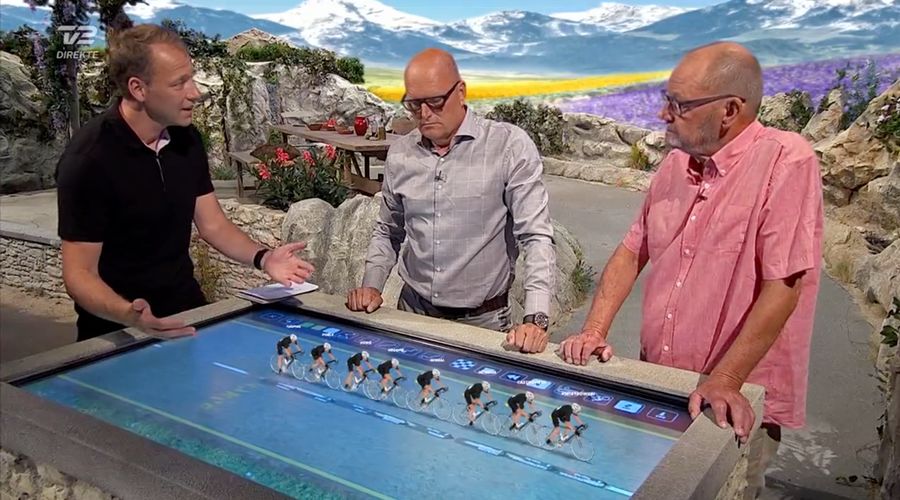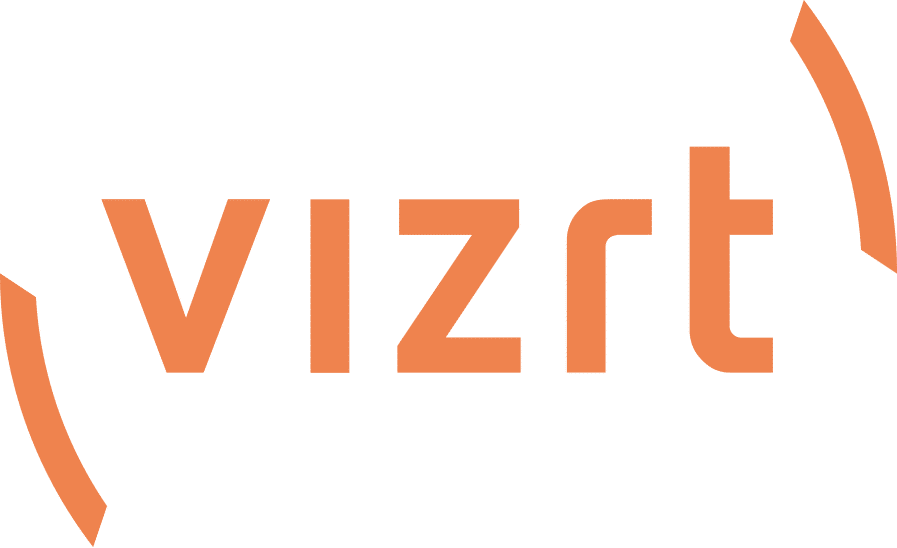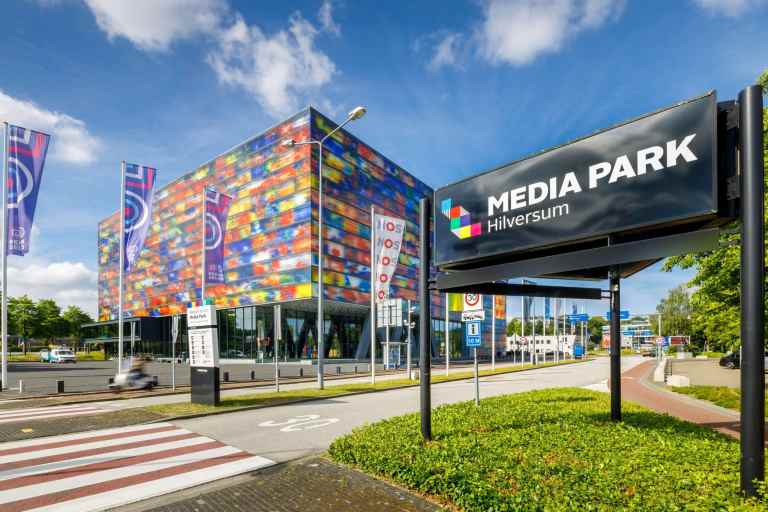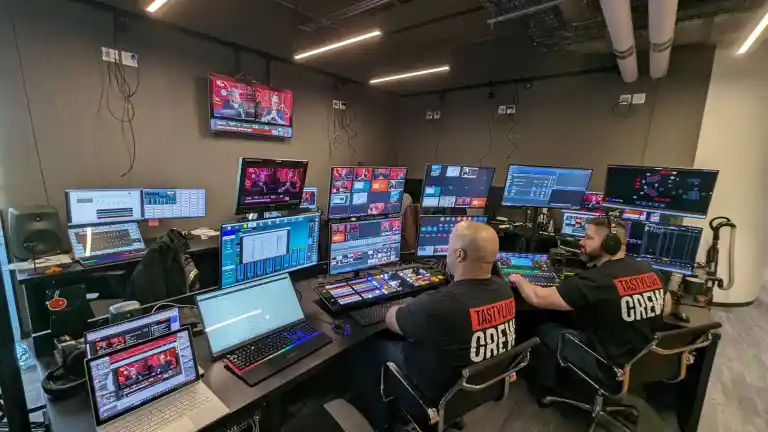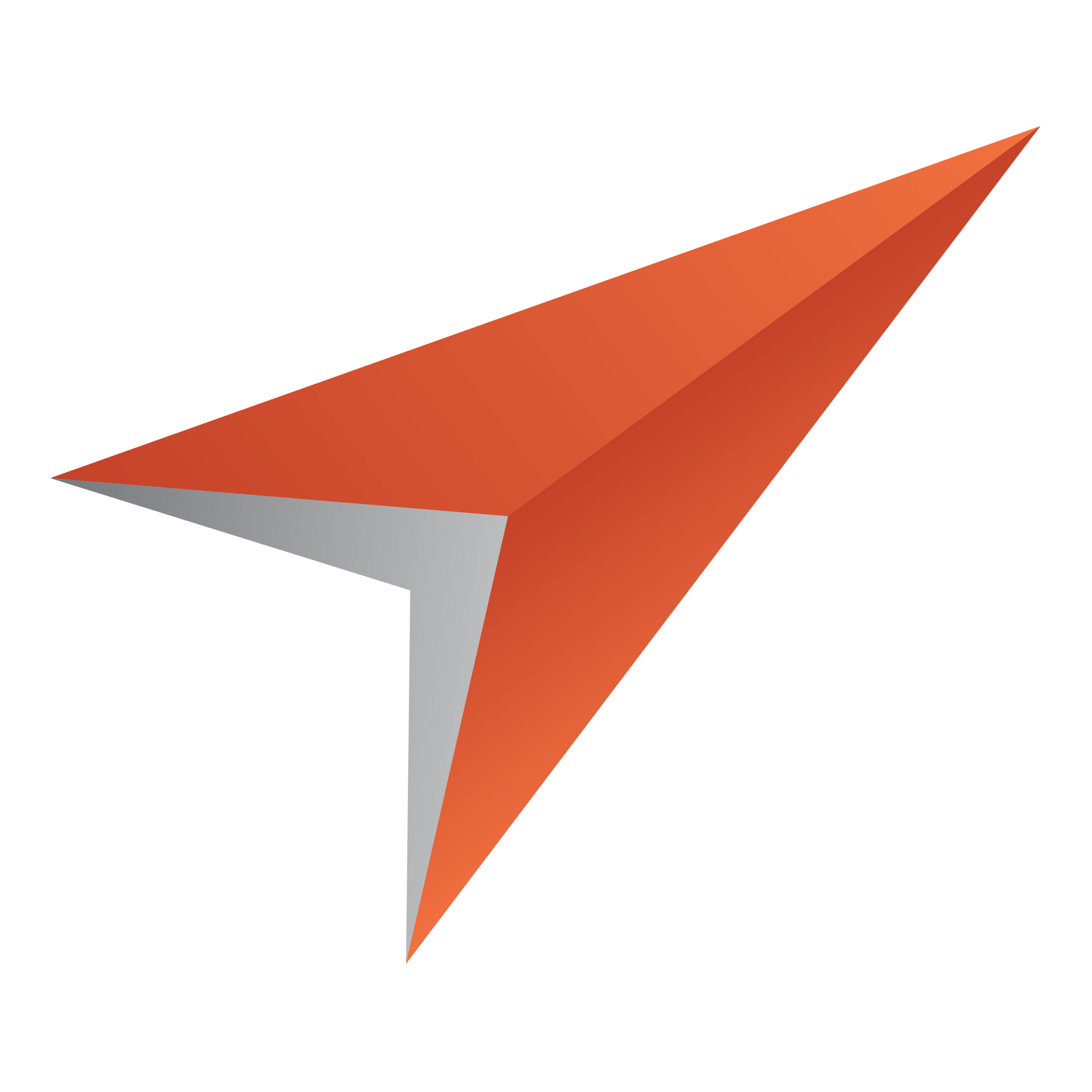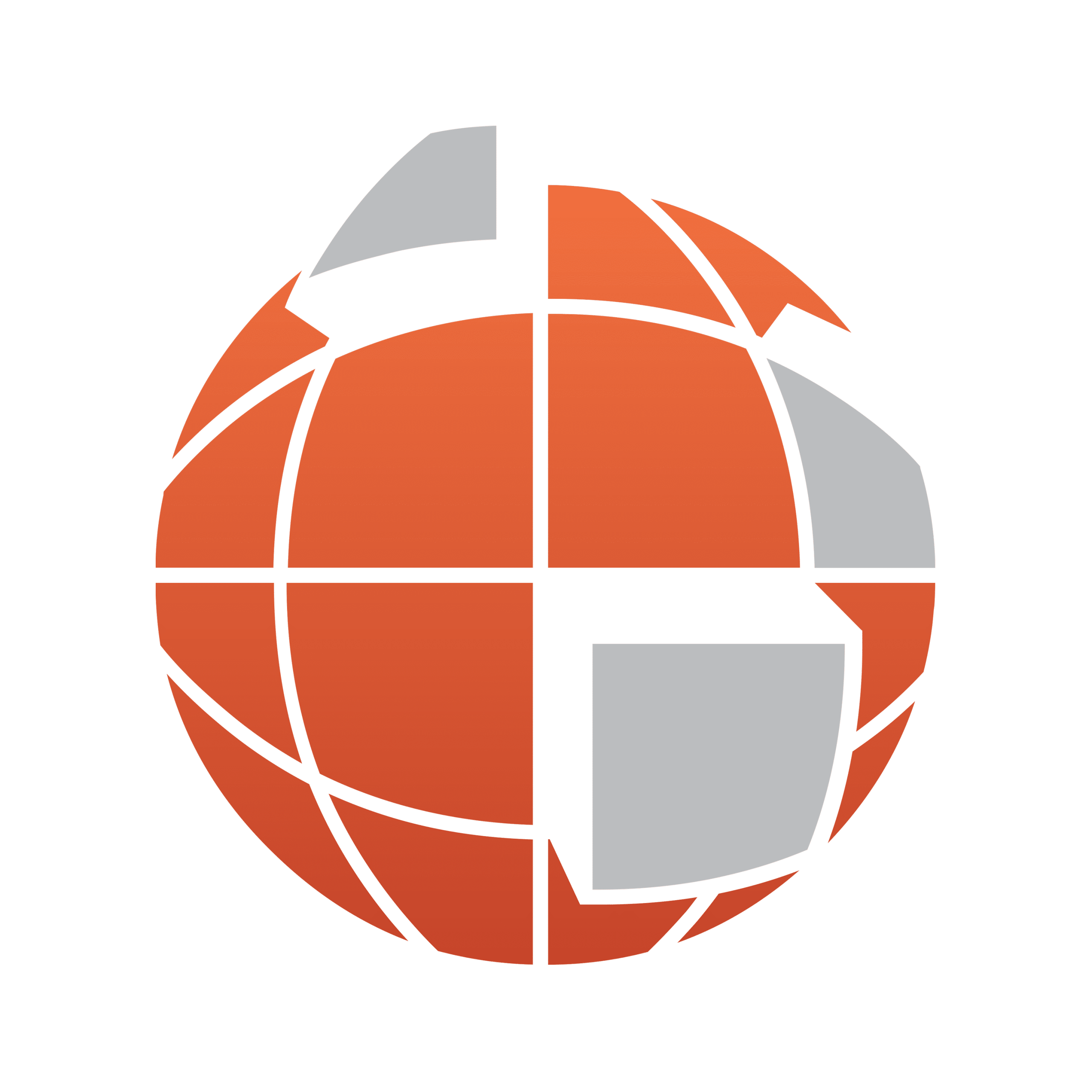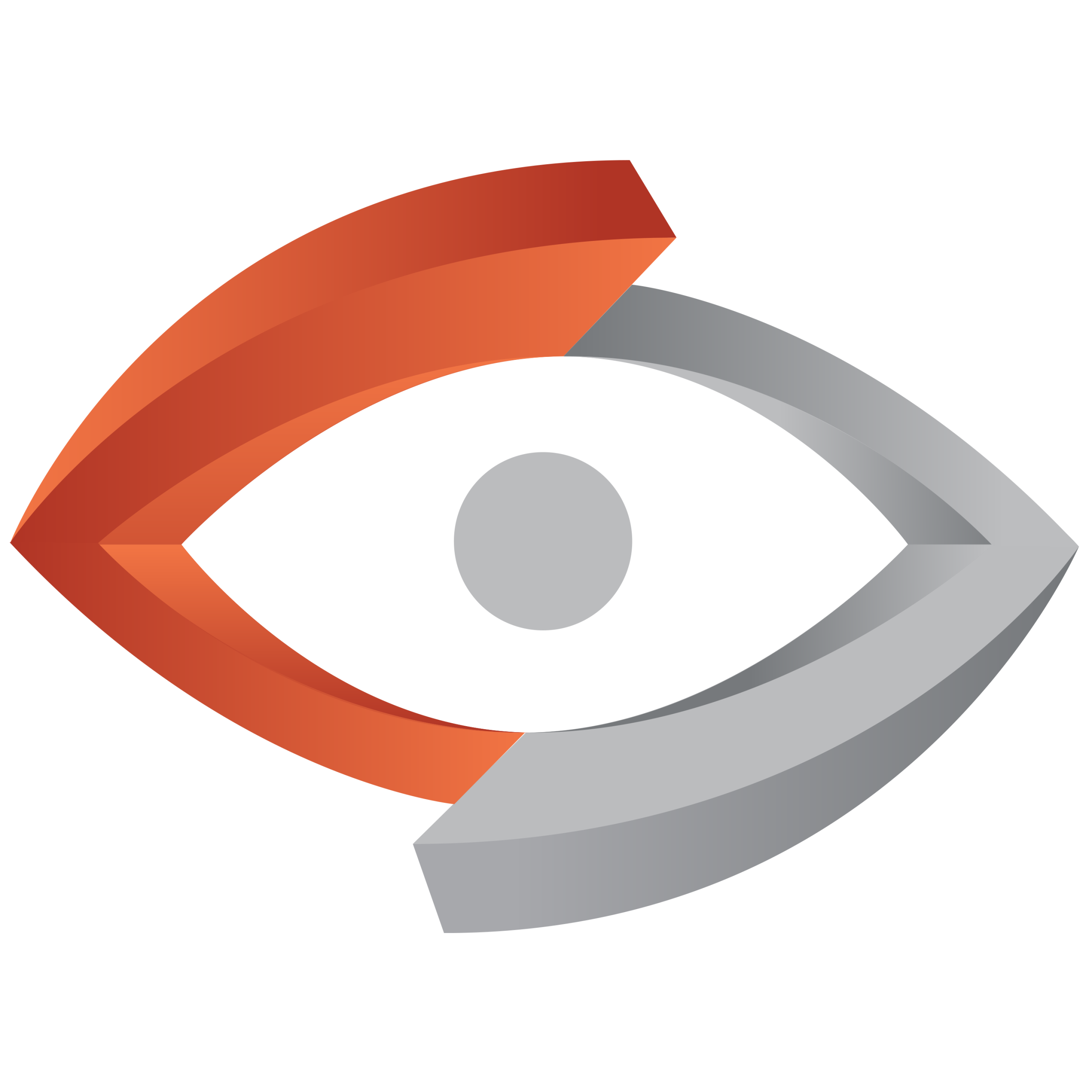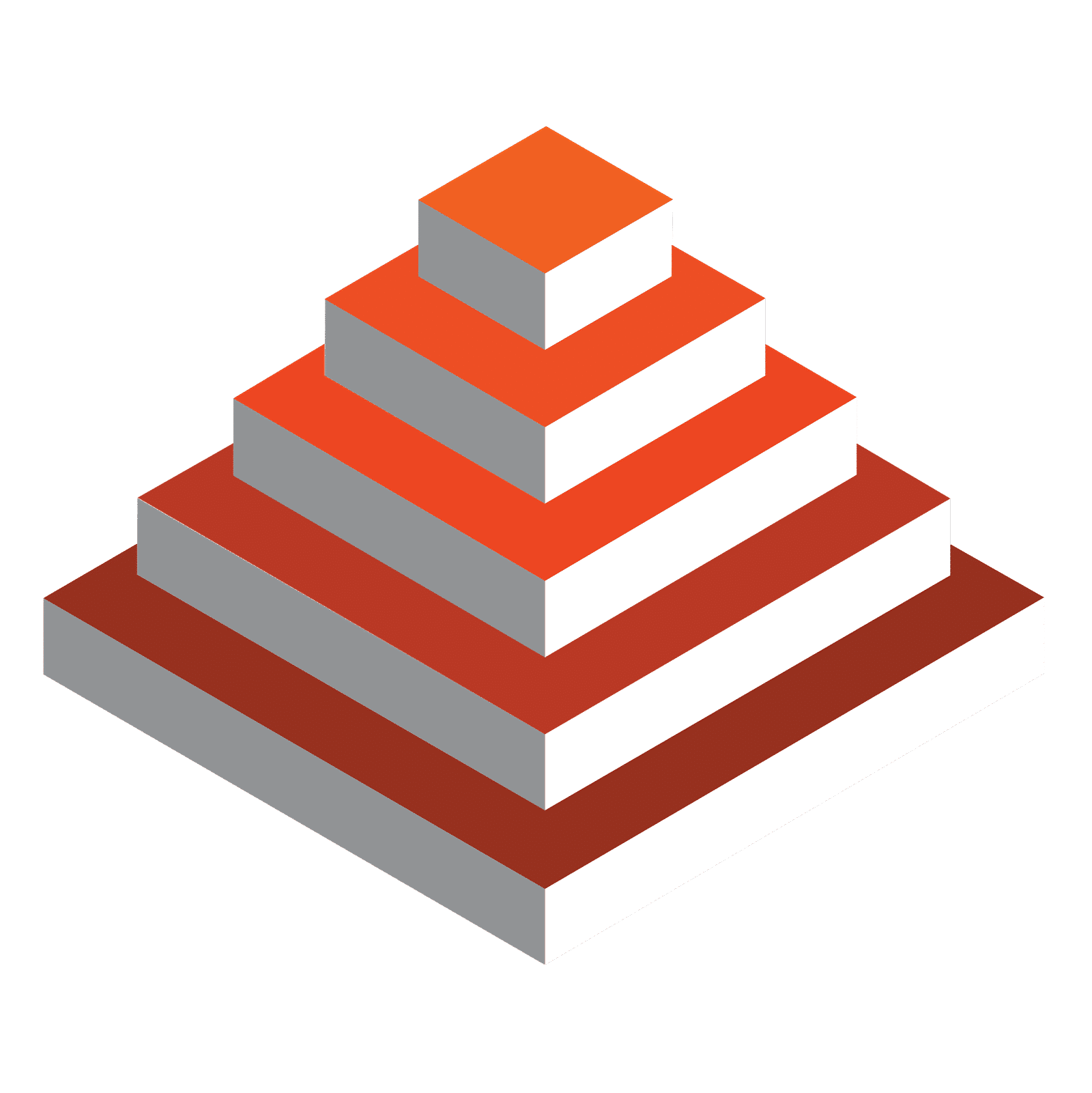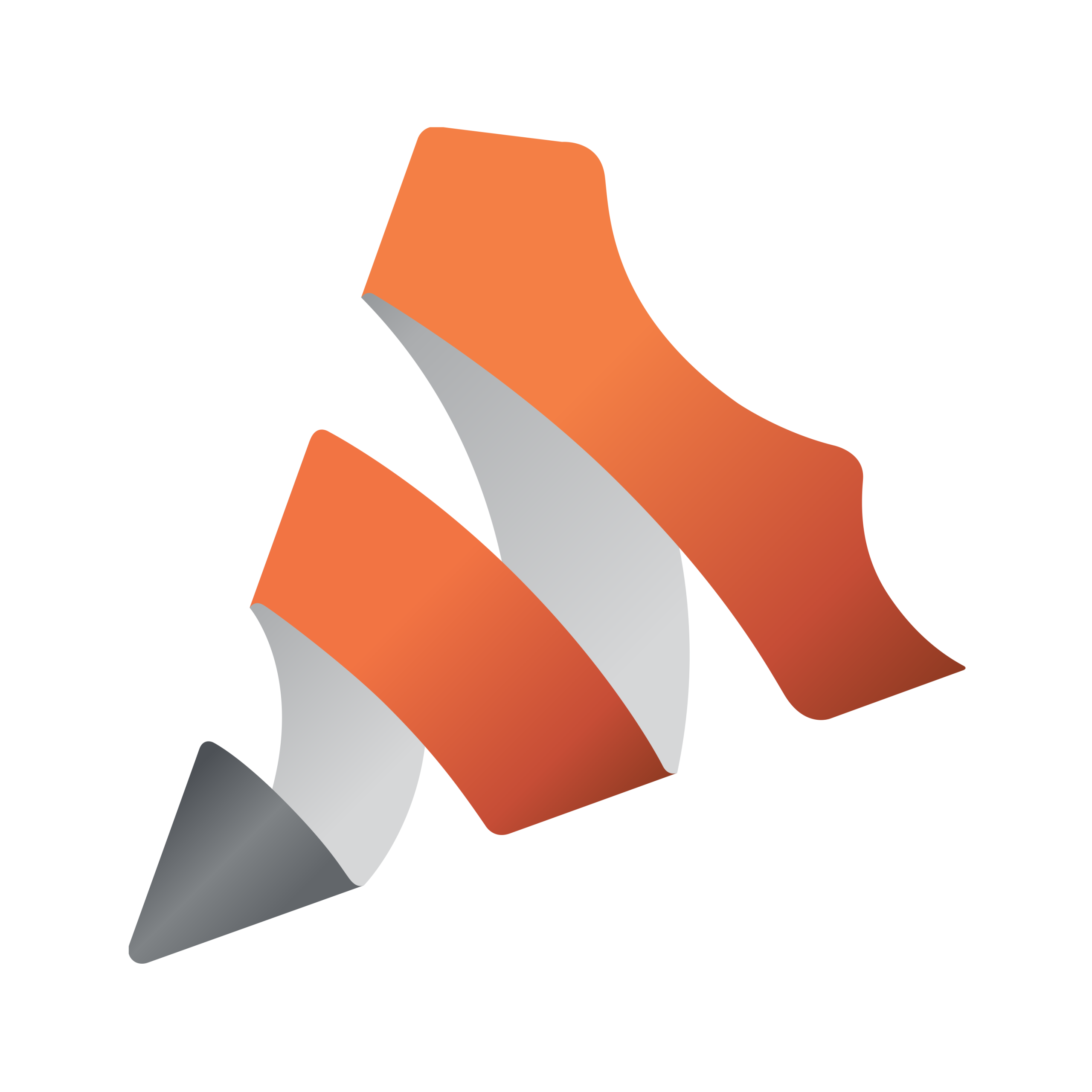For TV 2 Denmark, this year’s coverage of the Tour de France cycling race was all about raising the bar of its TV 2 SPORT studio. A newly designed studio and amazing on-air graphics were created to add reality into the studio and give their cycling experts a new tool for explaining the details of the iconic 21 day-long international sporting event. The revamped production studio also played home base for the channel’s World Cup coverage from Russia this summer.
In previous years the network noticed that its on-air look was not blending well with the world feed (ASO Live feed) it was using for its coverage. In 2017, they built a new studio with virtual sets and augmented reality (AR) graphics that reflect an inviting, high-tech look while also incorporating the French colors and landscape into the design. Last year’s studio was so well received by its audience and the industry at large that it won a ProMax award for best studio design (in March 2018).

“We did not use virtual sets in last year’s studio,” said Klaus Bøgeholdt, production manager at TV 2 SPORT. “Instead, we used a large round horizon with the print of an Alpine landscape. This year we have chosen to generate the whole background as virtual graphics (blue-screen). The primary reason for this is because this year our main TV 2 studio needed to be flexible enough to accommodate the scenography of both the World Cup in football and the Tour de France.”

With only half the space allotted for the Tour de France compared with last year, virtual set graphics, generated with the latest technology from Vizrt, allowed the TV 2 crew to make the studio look larger on air than it actually is. For this new look, TV 2 collaborated with set design company Sommer Larsen (located in Nyborg) to construct the studio in about three weeks (starting in March 2018). The design and creation of the virtual scenes took just under two months.
To get the captivating look Bøgeholdt was after, a new Technocrane was used in the studio to closely track on-set movements. This live feed was combined with the virtual elements in real time. The Vizrt solutions used include: one Viz Engine rendering system (for the virtual set backgrounds), one Viz Engine for a table-top touch screen board, and a third Viz Engine for rendering the AR elements. The channel’s full screen graphics also made extensive use of Viz Engine and were tightly controlled by Viz Pilot, a template-based system for journalists to create, manage, and deliver high volumes of live graphics.
The studio’s technical crew often combines the virtual sets with AR and other graphic elements on the on-set monitors to create the desired ‘you are there’ effect and tell the stories more completely. Bøgeholdt said that it is sometimes tough to find the right balance, but experimentation is helping them find their creative way.

Working with virtual graphics is quite new to us. For several years we have been working with AR graphics. But creating a virtual background that is associated with our physical elements in the studio has been a fun challenge. I think virtual graphics can do something very special when you use it with physical scenography. When the two elements play together (physical scenography and virtual graphics), it’s sometimes hard to tell what is physical and what is virtual on the set. I think we have hit something unique this year, using the best of the two worlds.Klaus BøgeholdtTV2 Sport
“Working with virtual graphics is quite new to us. For several years we have been working with AR graphics. But creating a virtual background that is associated with our physical elements in the studio has been a fun challenge. I think virtual graphics can do something very special when you use it with physical scenography. When the two elements play together (physical scenography and virtual graphics), it’s sometimes hard to tell what is physical and what is virtual on the set. I think we have hit something unique this year, using the best of the two worlds.”
Klaus Bøgeholdt
TV2 Sport
Key to the new studio design is a large on-set touch screen and a healthy dose of AR graphics to allow the on-air presenters to tell their stories in a highly in-depth and visual way. To tie the touch-screen and the AR graphics together, TV 2 worked with Promotheus.
“Our AR analysis table was actually developed for this year’s World Cup tournament,” Bøgeholdt said. “I immediately saw how valuable it was for our on-air experts to have an AR tool they could use to easily show what they were saying and for viewers to not only hear but also see what the expert meant. I thought it could be fun to modify it for cycling.” Since TV 2 now owns the rights to both the Tour de France and Vuelta a España (a similar multi-stage bicycle race primarily held in Spain), there will be ample opportunity for TV 2 to use the new studio to its full potential.
